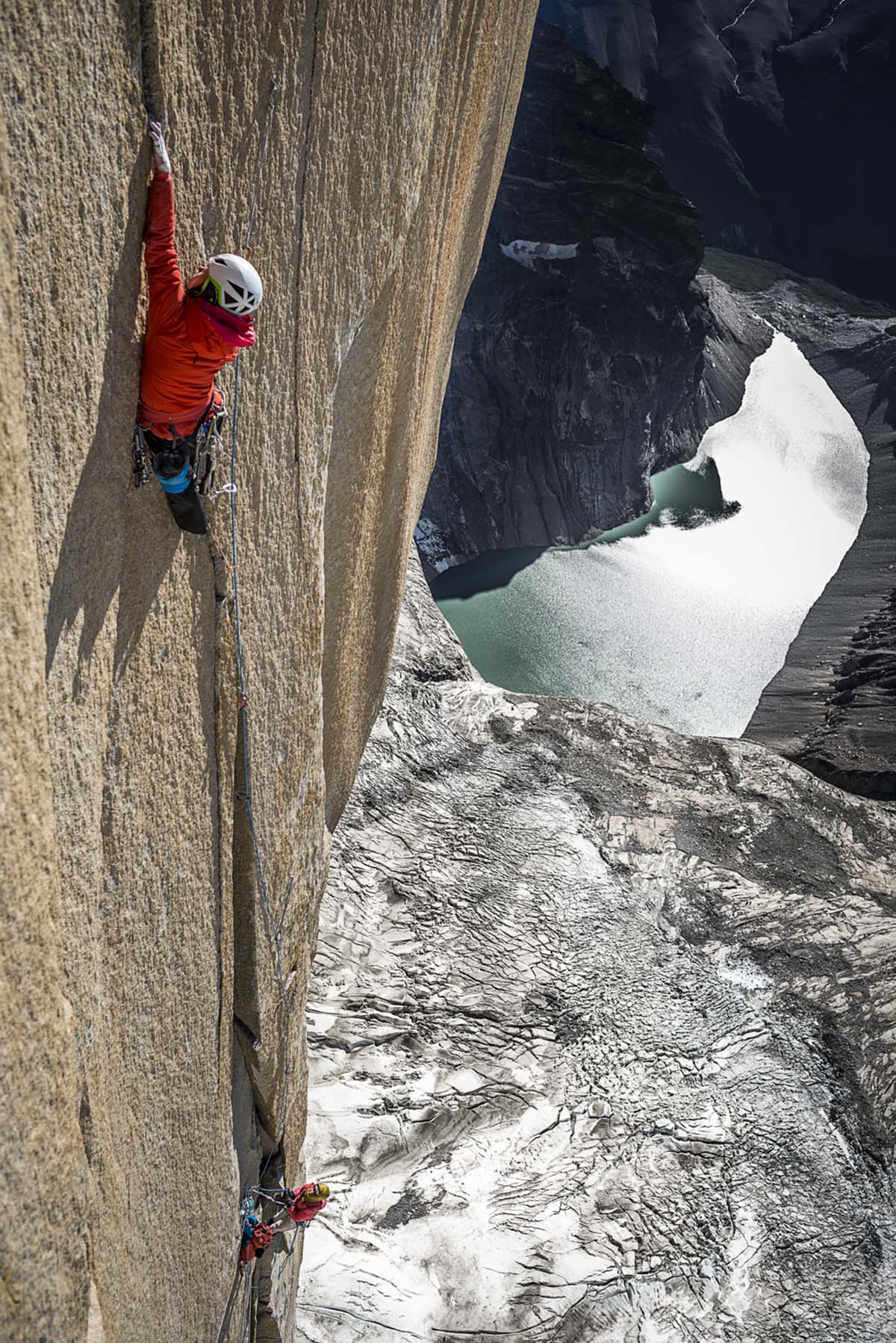INES PAPERT AND MAYAN SMITH-GOBAT IN PATAGONIA
This February, Ines Papert and Mayan Smith-Gobat, accompanied by their friend and photographer Thomas Senf, summited Torres Central, in Torres del Paine National Park (Chile) via the extremely difficult east face. 25 years after the first ascent of this historic route, this was only the fifth known successful ascent of ‘Riders on the Storm.’ This region is famous for its unstable weather conditions, making it a very challenging place to climb.
‘Riders on the Storm’ was first climbed by Wolfgang Güllich, Kurt Albert, Bernd Arnold, Peter Dittrich and Norbert Bätz in January 1991 during 15 days of climbing over a five-week period. This stunning line on the sheer 1300m east face of Torres Central line went at 7c, A3. The climbing is very varied and demanding, ranging from delicate and runout face climbing to wide cracks and roofs, which were often entirely iced up.
There have been no free ascents of this route, though many strong climbers have tried. Ines and Mayan’s goal was to free this route and due to challenging weather, they didn’t complete their mission. They did, however, make significant progress towards this goal. The two women succeeded in free climbing the upper two pitches, which had previously not been freed, and found a new 5 pitch “free variant” to avoid the other section of aid. They had to be creative and use several innovative techniques and combine their individual strengths to succeed as a team. “Never before would I have thought of deciding to climb wearing one rock shoe and one ice boot with crampons. But on the 18th pitch, a 7b+ off-width, there didn’t seem to be any other option than to use this new technique. Additionally, using ice axes, both for climbing with and as protection,” Ines describes.
For Mayan it was a special experience as well. “Finger and hand jamming directly against ice proved to be a new and very unpleasant challenge,” she remembers. “I strongly dislike climbing with no feeling in either hands or feet, yet on this route this was mostly a distant dream. It forced me to pull on all my climbing knowledge to push past pain and succeed in freeing the difficult 29th and 30th pitch with no sensation and profusely bleeding fingers.”
The trip began with incredibly stable weather. With the knowledge that in Patagonia, a good summit day is rare, the team quickly decided to make the most of the stable weather and focus on making it to the summit before investing time into free climbing the difficult lower pitches. This tactic worked, and on the last really good day, and after three weeks on the wall, Ines, Mayan and Thomas made it to the summit. They reached the top of Torres Central at 12.48 on the 6th February on a rare perfect day. However, their success was dampened that night when they were awoken by a huge rock falling past the portaledges. A piece of the fly was torn open when a rock fell on the tent and narrowly missed the women. They were shaken but determined to finish the route. Ines and Mayan returned to work on free climbing the lower pitches. After their perfect summit day, the weather deteriorated, becoming truly ‘Patagonian’, which made it nearly impossible to climb. They had no other choice than to leave the two crux pitches of the new variation without an a scent.
During the entire time they spent on this wall, their nerves were constantly tested by the weather, rock and ice fall. Early in the trip a piece of ice hit Ines’ helmet, cracking it in half. On the last day, she jumared up a fixed rope which was nearly cut through by rock fall. These instances caused Ines to decide: “I have had a lot of luck on the wall. Even though the prospect of coming back isvery tempting, I have decided the level of risk is not worth it. Mayan, however, is motivated to return and try this route again, and for this I wish her all the luck in the world!”
